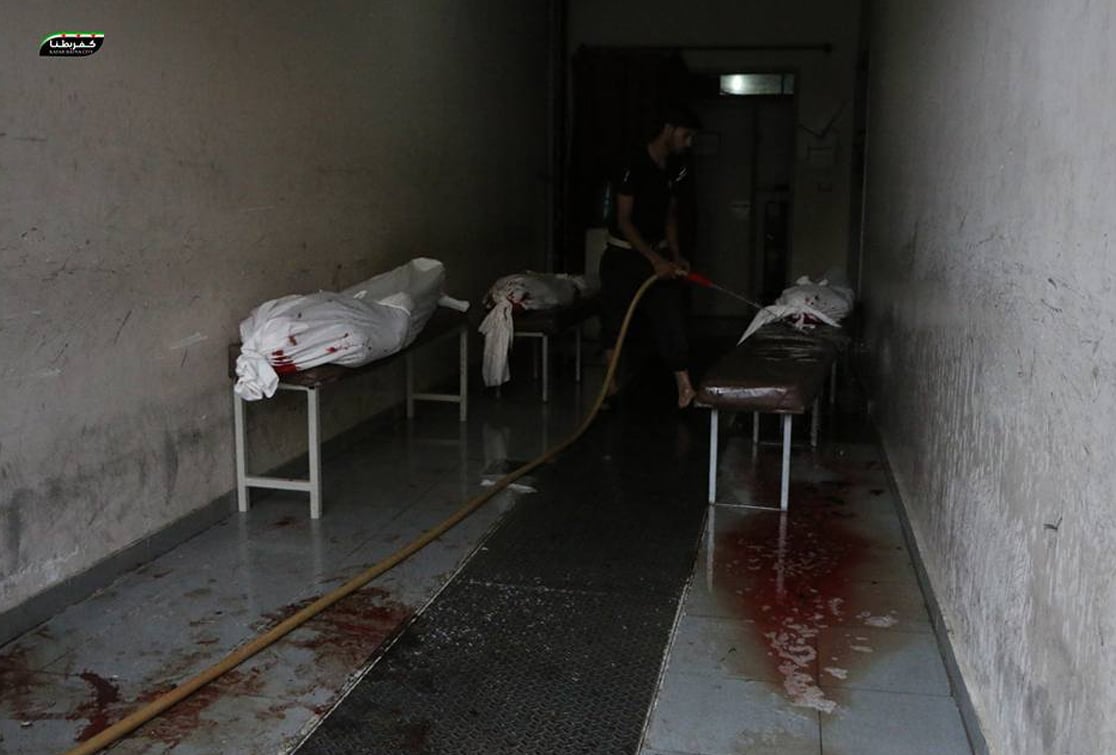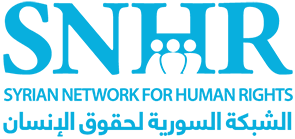International Coalition Forces Kill More Civilians than any other Party

SNHR has published its periodic death toll report for the month of August 2017 in which it documented the killing of 772 civilians at the hands of the parties to the conflict in Syria.
The report sheds light on the de-escalation zones agreement that went into effect on May 6, 2017, after it was announced at the end of the fourth round of negotiations that was held between Russian, Turkish, and Iranian representatives, who attended as the sponsoring states of Ankara Ceasefire Agreement. The agreement establishes four de-escalation zones that will see cessation of combat operation, and passage of humanitarian aids, while the IDPs are allowed to go back to these areas. The areas, as outlined by the agreement, are: Idlib governorate and the surrounding areas (parts of Aleppo, Hama, and Latakia governorates), northern Homs governorate, Eastern Ghouta, and parts of Daraa and al Quneitra governorates in the southern parts of Syria, provided that an expert committee will accurately assign the borders of these areas at a later date.
The report also notes that an extensive round of talk that commenced in May 2017 in the Amman, Jordan’s capital, between Russia, USA, and Jordan was followed by an announcement by the American and Russian presidents, on the sidelines of the 2017 G20 summit in Hamburg, that a ceasefire agreement has been reached in southwestern Syria – Daraa, Quneitra, and Suwayda governorates. The agreement went into force at 12:00 on Sunday July 9, 2017, and provided for the passage of humanitarian aids in addition to a ceasefire between the conflicting parties (Syrian regime forces and their allies on one side, and armed opposition factions on the other side). Also, the agreement specifies that maintaining security in this region is the Russian forces’ responsibility in coordination with the Americans and Jordanians.
Then, the report talks about other local agreements that have been struck, such as Easstern Ghouta between armed opposition factions in Eastern Ghouta and officials from the Russian side, and a similar agreement in northern suburbs of Homs governorate. However, the texts of these agreements haven’t been made public on Russian government’s websites, and the same for armed opposition factions who didn’t publicize these agreements, except for Failaq al Rahman who published the text of the agreement on their official website. At the end of the agreement, according to the copy on Failaq al Rahman’s website, a signature by a Russian sponsor was shown but without an explicit name, which is a great flaw, as apparently all of this helps the sponsoring Russian side to easily dissolve from these agreements with no subsequent political or legal obligations and repercussions.
A de-escalation agreement was signed, according to the Russian Ministry of Defense, in Egypt’s capital Cairo on Saturday, July 22, 2017, in Eastern Ghouta following a round of talks between Russian military officials and factions from the armed opposition that took place in Egypt’s capital Cairo. The agreement was to come into effect at 12:00 of the same day, while Failq al Rahman joined the agreement after a representative from the faction signed the agreement with a Russian government representative in Geneva city on Wednesday, August 16, 2017, as the agreement established Failaq al Rahman’s and their areas’ inclusion in the agreement, where it was to come into effect at 21:00 of Friday, August 18, 2017.
The report also sheds light on northern suburbs of Homs and southern suburbs of Hama de-escalation agreement which was signed in Cairo on Monday, July 31, 2017 following a round of talks between armed opposition factions in the area and the Syrian regime represented by the Russian government a sponsoring party, as the agreement was to commence at 12:00 on Thursday, August 3, 2017. Most notably, the agreements provided for a full cessation of hostilities between the conflicting parties in the relevant areas -with the exclusion of the areas in which ISIS and Hay’at Tahrir al Sham are present- and for humanitarian aids to enter these areas and for detainees to be released as per the demands of each party as to which detainees are to be released.
The report notes that the de-escalation agreements reflected on the civilians’ lives in most the included areas which saw a relatively noticeable and good decrease in killing rates compared with the previous months since March 2011, where we recorded last month a 69% decline in the rates of killings at the hands of the Syrian-Russian alliance throughout Syria from last April, which reflected on the living aspects of civilians who live in the areas that were included in the agreement, as patients were able to go to hospitals and medical points, and many children went back to school after their families prevented them out of fear for their lives in light of the repeated bombing that targeted schools, as well as hospitals. Markets became more active, and many infrastructure services were restored thanks to a number of maintenance campaigns. Nonetheless, breaches didn’t stop, mainly by the Syrian regime, who is seemingly the party that would be most affected should the ceasefire go on, and in particular extrajudicial killing crimes and, more horrendously, deaths due to torture. This strongly asserts that there is a ceasefire of some sort on the table, but the crimes that the international community -especially the sponsoring parties- won’t see are still going on as nothing had happened.
We haven’t seen a significant drop in civilian death numbers compared with last July, as the toll of civilian victims killed by Syrian regime forces imply a failure to comply with the agreement on the Syrian regime’s part, given that they continue to kill civilians in most of the Syrian governorates, whereas international coalition forces have topped all other parties in terms of killing civilians, as they were responsible for the killing of 37% of all civilians who were killed. Out of the victims killed by international coalition forces, 55% were children and women. On the other hand, we recorded an unprecedented drop in number of civilian killings by Russian forces since the Russian intervention began in Syria on September 30, 2015.
Furthermore, the report notes that SNHR team encounters difficulties in documenting victims from armed opposition factions as many of those victims are killed on battlefronts and not inside cities. Also, we aren’t able to obtain details such as names, pictures and other important details on account of the armed opposition forces’ unwillingness to reveal such information for security concerns among other reasons. Therefore, the actual number of victims is much greater than what is being recorded.
On the other side, the report stresses that it is almost impossible to access information about victims from Syrian regime forces or from ISIS and the margin of error is considerably higher due to the lack of any applicable methodology in this type of documentation. The Syrian government and ISIS don’t publish, reveal, or record their victims. From our perspective, the statistics published by some groups on this category of victims are fictitious and are not based on any actual data.
Therefore, the report only incudes civilian victims who were killed by all parties and compare them.
The report records that 7,203 civilians have been killed from the start of 2017 until September at the hands of the parties to the conflict. Furthermore, the report outlines the death toll of August 2017, as the report says that 229 civilians were killed by Syrian regime forces, including 24 children (one child is killed every day on average) and 17 women (adult female). Additionally, among the victims were 27 civilians who died due to torture.
The report notes that forces we believe are Russian killed 11 civilians including three children and three women.
Additionally, the report documented the killing of 54 civilians at the hands of the Kurdish Self-management forces including 10 children and seven women.
The report documents that 107 civilians were killed by extremist Islamic groups. Of those, ISIS killed 102 civilians, including 22 children and 13 women. Also, among the victims was one civilian who died due to torture. On the other hand, Fateh al sham Front killed five civilians including one child and two who died due to torture.
Also, the report says that armed opposition factions killed 13 civilians including five children and one woman. Also, among the victims was one child who died due to torture.
In addition, the report records that 285 civilians, including 97 children and 58 women, were killed by the international coalition forces in August 2017.
The report documents that 73 civilians, including 16 children and 12 women, have either died drowning as they were fleeing by sea or in bombings that SNHR hasn’t been able to identify its perpetrators, as of this writing, or by bullets or landmines that we couldn’t determine their source, or by Turkish, Jordanian, or Lebanese forces.
The report says that SNHR hopes that the de-escalation zones agreement sees a good commitment, so it becomes a stronger foundation on which a political process would be built that would fulfil justice for the victims, and hold all the perpetrators accountable for their violations; most pressingly the party that was primarily responsible for the dire situation that Syria have come into: the current ruling regime who has perpetrated roughly 90% of all violations against the Syrian people.
The report emphasizes that Syrian-Russian alliance forces have violated the international human rights law which guarantees the right to life. Furthermore, evidences and proofs, according to hundreds of eyewitnesses’ accounts, suggest that 90% at least of the widespread and single attacks were directed against civilians and civilian facilities.
The report adds that international coalition forces have perpetrated crimes of extrajudicial killing that qualify as war crimes. Additionally, Self-Management forces, ISIS, Fateh al Sham Front, and some armed opposition factions have committed war crimes through the crime of extrajudicial killing.
The report calls on the Security Council and the relevant international entities to uphold their responsibilities in relation to the crimes of killing that is being perpetrated ceaselessly and to apply pressure on the Syrian government to stop the deliberate and indiscriminate shelling against civilians.
The report considers the Russian regime, all Shiite militias, and ISIS as foreign parties that are effectively involved in the killings and holds all of these parties and the financiers and supports of the Syrian regime legally and judicially responsible.
Furthermore, the report calls on the sponsoring Russian side to stop the Syrian regime from dooming all de-escalation agreements, and start making progress in the detainees issue by revealing the fates of 76,000 forcibly-disappeared persons at the hands of the Syrian regime.


